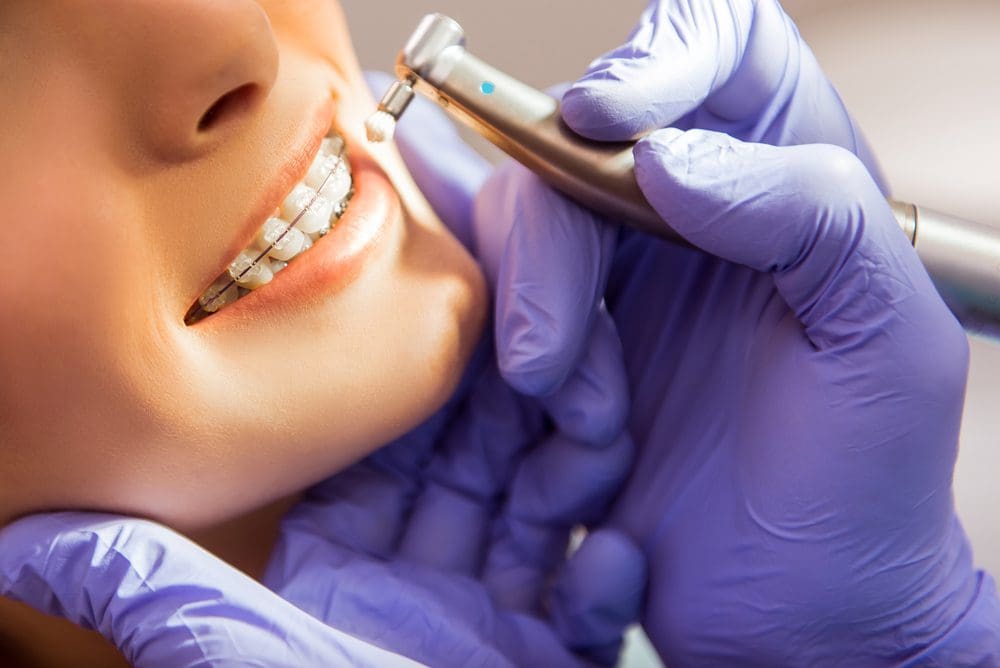Comprehensive Overview to Orthodontics Procedures for Fixing Oral Imbalances
In the world of orthodontics, the journey to achieving a flawlessly aligned smile entails a myriad of treatments customized to deal with oral imbalances. From standard braces to undetectable aligners and even medical alternatives, the area of orthodontics provides a series of options to deal with varying degrees of oral irregularities. Understanding the complexities of each treatment, including their mechanisms, advantages, and prospective disadvantages, is essential in making informed choices about one's orthodontic treatment. As we browse via the thorough guide to orthodontic procedures for fixing oral misalignments, the elaborate details of each technique will certainly unfold, losing light on the course towards a useful and unified oral placement.
Orthodontic Procedures Summary

Along with conventional braces and clear aligners, orthodontists might likewise advise various other interventions like headgear, palatal expanders, or retainers to deal with details alignment issues (cumming braces). These procedures are tailored to every individual's one-of-a-kind demands and may involve a mix of therapies to attain the preferred outcomes. Routine changes and surveillance are important components of orthodontic therapy to make sure development gets on track and to make any essential adjustments along the road. By going through orthodontic procedures, patients can not only achieve a straighter smile but likewise improve their overall oral health and function.
Standard Braces: Just How They Work
When taking into consideration orthodontic treatments for dental misalignments, conventional braces stand apart as a tried and true technique for remedying teeth positioning. Standard dental braces contain brackets, cables, and bands that work together to apply constant stress on the teeth, slowly relocating them right into the desired alignment. The braces are affixed to the teeth making use of a special adhesive, and the cables are threaded through the braces. By adjusting the stress of the cords, orthodontists can manage the direction and pressure put on each tooth, directing them right into proper positioning with time.
As stress is used to the teeth via the braces, the bone bordering the teeth is reshaped to support the new tooth positions. Patients will certainly need normal changes at the orthodontist's workplace to make sure the dental braces proceed to use the appropriate pressure for reliable teeth activity.
Unnoticeable Aligners: Cons and pros
Unnoticeable aligners provide a hassle-free and very discreet choice to standard braces for correcting dental misalignments. These clear, custom-made trays are practically unseen when worn, making them an enticing alternative for people seeking a more cosmetically pleasing orthodontic treatment. One of the main advantages of unseen aligners is their removability, permitting simpler upkeep of dental hygiene compared to typical braces. Clients can get rid of the aligners before consuming or brushing their teeth, lowering the threat of food obtaining embeded the home appliance and streamlining the cleansing process.

Surgical Orthodontic Options
Surgical interventions in orthodontics present practical options for addressing complicated oral imbalances that might not be effectively fixed via traditional orthodontic therapies. While unnoticeable aligners and traditional braces can fix several orthodontic problems, specific cases call for surgical intervention to accomplish optimum outcomes. Surgical orthodontic choices are typically suggested for serious malocclusions, considerable jaw inconsistencies, and instances where the underlying bone structure requires modification to achieve correct alignment.
One typical medical orthodontic procedure is orthognathic surgical treatment, which entails rearranging the jaws to correct practical concerns such as problem talking or chewing. This surgery is commonly done in partnership with an orthodontist that helps align the teeth prior to and after the procedure. Surgical orthodontics may also involve procedures to expose influenced teeth, get rid of excess periodontal tissue, visit this website or improve the jawbone to develop a much more unified face profile.
Prior to taking into consideration medical orthodontic choices, individuals go through an extensive evaluation to establish the need and prospective benefits of such treatments. aligners. While surgical treatment may seem overwhelming, it can substantially enhance both the feature and appearances of the smile in situations where standard orthodontic treatments fail
Retainers and Post-Treatment Care

Post-treatment care includes following the orthodontist's guidelines vigilantly. This may include appropriate oral hygiene practices, going to follow-up consultations, and using the retainers as prescribed. Failing to abide by post-treatment treatment guidelines can cause regression, where the teeth gradually relocate back towards their original positions. Regular retainer wear, good dental hygiene, and routine dental exams are necessary for maintaining the results achieved through orthodontic surgical procedure and guaranteeing the long-lasting stability of the dealt with dental alignment.
Final Thought
Finally, orthodontic treatments use numerous choices for dealing with dental imbalances. Standard braces utilize steel brackets and cords to shift teeth right into correct alignment. Unseen aligners provide an even more very discreet option but may not appropriate for all instances. Surgical orthodontic choices are offered for extra serious imbalances. Retainers are commonly utilized post-treatment to maintain the brand-new alignment. Overall, orthodontic procedures can properly boost dental health and visual appearance.
As we browse through the extensive overview to orthodontic treatments for correcting dental misalignments, the detailed information of each technique will certainly unravel, shedding light on the course toward a unified and practical dental alignment. - cumming braces
One of the most common orthodontic therapies click site is the usage of dental braces, which are composed of steel brackets and wires that use mild pressure to slowly change teeth into the desired placement.When taking into consideration orthodontic treatments for oral imbalances, traditional dental braces stand out as a time-tested method for fixing teeth positioning. Additionally, unseen aligners may not be appropriate for complicated orthodontic concerns that call for more significant teeth motion, as they are usually suggested for mild to modest situations. Retainers are customized orthodontic tools created to hold teeth in their corrected placements after the dental health care completion of orthodontic therapy.